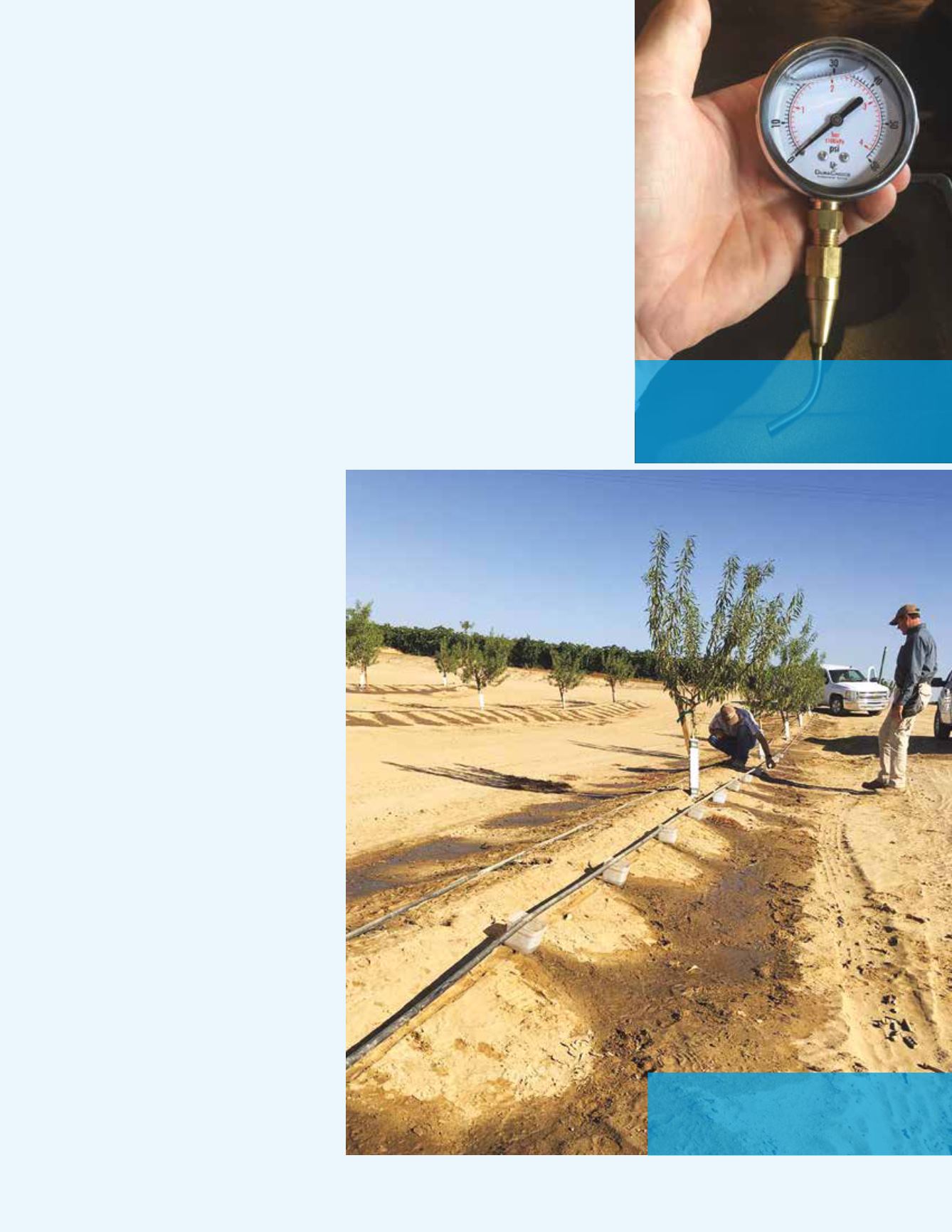
MARCH | APRIL 2017
Almond Facts
39
of the degree of uniformity of
sprinkler discharge in the orchard.
High variability between sprinkler
pressures leads to overapplication
of water in areas of higher pressure,
and under-irrigation in areas of
lower pressure.
Evaluating Other
Delivery Systems
For evaluation of rotator sprinklers and
micro-irrigation delivery systems, step-
by-step directions can be found in the
section Irrigation System Performance
of the online document “Almond
Irrigation Improvement Continuum
1.0,” available both as a PDF and a
mobile-friendly EPUB.
Before you take steps to personally
evaluate your irrigation system, check
to see if there is a mobile irrigation lab
in your area. Mobile labs across the
state are sponsored by a local agency
(county, resource conservation district,
water district, etc.) in partnership
with the California Department of
Water Resources. They are experts
in irrigation system evaluation and
will do the evaluation for minimal or
no charge. Currently, there are 12 to
15 mobile labs working in California,
with five in the Central Valley.
Commercial companies in your
area may also do irrigation system
evaluations for a fee.
“It’s important for growers not only to
maintain their irrigation systems, but
to also understand the overall impact
that maintenance has on the life of
their irrigation infrastructure,” said
Cooper. “Taking the steps to evaluate
your irrigation system and making
adjustments has the potential to
improve your distribution uniformity,
and could also greatly improve your
irrigation efficiency.”
If there is more than a 20 percent
difference between pressure readings,
it is likely that the application
uniformity is not as good as desired.
Therefore, consult an irrigation
professional, who may be able to make
a recommendation to improve the
pressure uniformity.
While this article provides
recommendations for 1.0 minimum
practices, growers can further improve
their practices by consulting the
Irrigation System Performance section
of the Almond Irrigation Continuum
Levels 2.0 and 3.0, which include
increased frequency and detail in
monitoring and improvement.
For more information about the Irrigation
Improvement Continuum, please visit
Almonds.com/Irrigation
.
Whether measuring pressure in the drip line
or from sprinklers, it’s recommended that the
same new pressure gauge be used to measure
all the pressures in the system.
Measuring the output of each drip emitter will
reveal if there is plugging or other problems
preventing a uniform distribution of irrigation
water. Placing a catch can under each emitter and
measuring the amount of water emitted in a set
amount of time will point out any inconsistencies.


